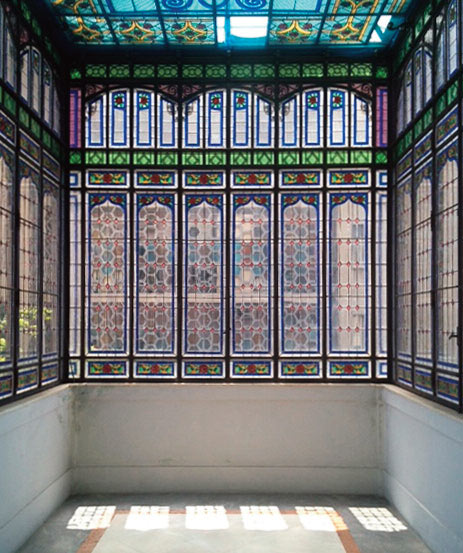The Museum of Representation

Scientific coordinator: prof. Mariateresa Galizia
Villa Zingali Tetto is the designated place for our Museum of Representation, named after the lawyer Paolo Zingali Tetto who, at his death in 1969, donated his private residence to the University of Catania. Paolo Lanzerotti, the architect as well as engineer for the villa was responsible for the project plan that had been commissioned in 1926. He worked with artists of the time including Gaetano D’Emanuele for the decoration of walls, ceilings and floors and with Salvatore Gregorietti too for the realization of stained-glass windows and the conservatory.
In 1996, as part of a joint project that involved Catania and Lecce, in 1996 restoration works were financed for the villa to be used as both a Laboratory and as a Museum of Representation under the responsibility and the supervision of Prof. Piera Busacca. The museum layout was designed by prof. Giuseppe Pagnano.
The two most important collections housed by today’s museum include that of Francesco Fichera, consisting of around 1600 heliographic copies and original drawings displaying various execution techniques, and the one provided by Giovanni Battista Piranesi, consisting of around a thousand etchings of the 18th century. From the same period, some other collections by minor artists such as Camporesi, De Vico and Pannini are exhibited too.
In 2006, the real estate was closed and reacquired by the University of Catania that left it out of service until 2016. By then, a whole university museums system had been established whereby 22 museums in Catania, each one belonging to its own department, were rearranged accordingly.
The main goal of the university museums system today is the enhancement of both research and teaching activities at the Department of Civil Engineering and Architecture especially those pertaining to the Architecture, as well as the protection and safeguard of the documentary heritage owned by the same department. Two laboratories have been set up embracing survey, representation and digital reconstruction as opposed to instruments and design. They are open to internal research and teaching activities with an experimentation centre for exchanging views and sharing common interests with external bodies (schools, districts, provinces, authorities, private organizations and professional bodies). Their main field of application is certainly cultural heritage.
Information and Admission
Temporaly closed to the pubblic